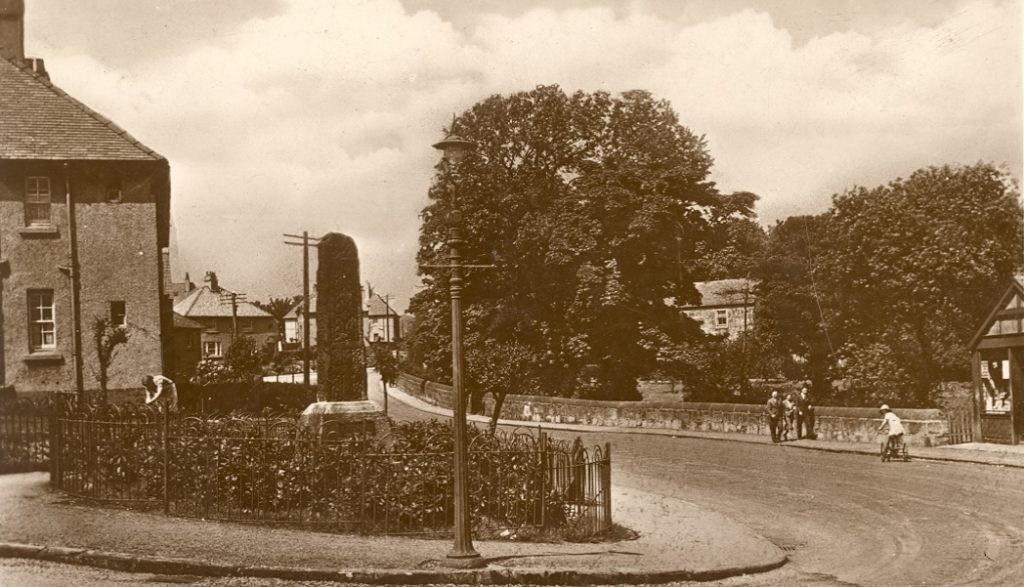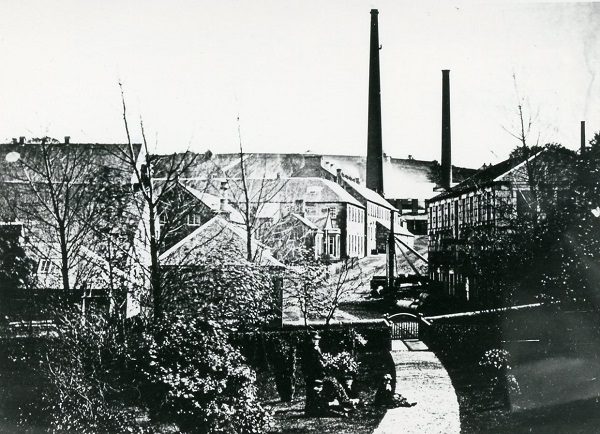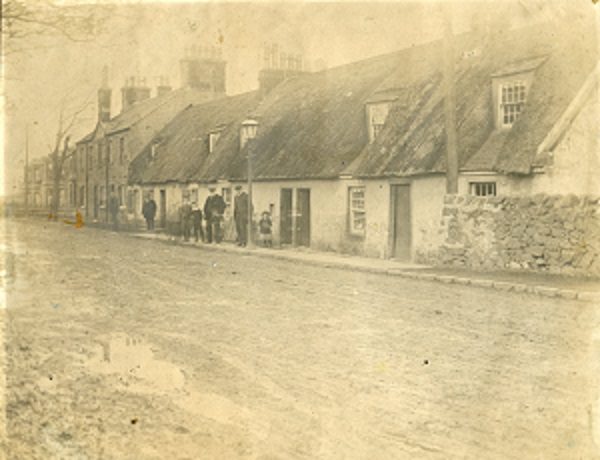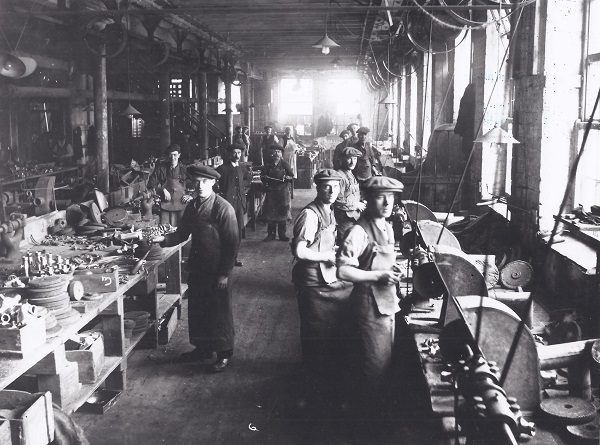

History of Barrhead
Read on to discover the origins of Barrhead
Barrhead as we know it now, didn’t really come into existence until the middle of the 18th century. Prior to that, the area was home to a few scattered settlements, the earliest being at Dovecothall, Aurs, Fereneze and Dealston. This article will explore its history from early times, through its evolution as a centre for industry during the 18th and 19th century, to the present day.
There is however, evidence of settlement in the area from the earliest times, and several early sites of significance. At Duncarnock, there are the remains of an iron age hillfort, which is now an ancient scheduled monument. The Arthurlie Cross, which sits on Springhill Road, dates back to the 10th century or earlier. No-one is sure exactly what the purpose of these stone crosses were. They may have marked the gathering place of a congregation that was too distant or too large for a church. Or they could have been secular in nature; another theory is that these crosses were used as markers to show land boundaries. At Fereneze, there was an early religious settlement based at Chappell. It was linked to St. Conval and centred around a holy well.

The area was part of what would become Neilston Parish. In the 12th century, Walter Fitz Alan (the founder of the Stewart family) was granted large amounts of land in Renfrewshire. He in turn granted land to his followers, one of whom, Robert de Croc, gained lands around Barrhead and Neilston. Robert built a church on the site of the current Neilston Parish Church, which was tied to Paisley Abbey.
Robert had no sons but one of his daughters married a younger son of Walter Fitz Alan, founding the branch of the Stewart family referred to as the Stewarts of Darnley. At some time before 1449, one of these Stewart’s built Stewart’s Rais which used to stand in the north east of the town. It was really a watchtower or a stagepost for soldiers and officials and the family also used it as a hunting lodge. Although the tower is long demolished, we have reminders of it in local place names. The name Bowerwalls would have come from its walled garden and Dovecothall from a dovecot for pigeons, kept to provide meat in the winter.
Up until the industrial revolution, the area would be predominantly agricultural, but the 1800s heralded in a time of great change for the whole of Britain, and East Renfrewshire was no exception.
Barrhead and Neilston were perfect places for the burgeoning textile industry to develop. The water from the Levern was clear and pure and was first used to bleach and print cloth and then to generate power for mills and printworks. The first industrial undertaking in the area was said to be a printfield at Fereneze, opened by Graham of Chappell around 1773. More followed and by 1832, there was a continuous chain of bleachfields, mills and printworks all along the length of the Levern.
The Industrial Revolution and growth of Barrhead
One of the biggest employers in Barrhead was the South Arthurlie Printworks owned by the Heys family. Springhill village grew around the works, which were bought by Zechariah Heys in 1841, and remained in operation until 1930. The influence of the Heys in Barrhead can still be seen in the name of Heys Street, named after Zechariah and George, Henry and John Streets named after his sons.

The industry changed the area in many ways. In 1755 there were only around 600 people living in what is now Barrhead. By 1811 there were around 2000. To accommodate the rapid population increase, more and more houses were built along the straggling road which led from Dovecothall, over stepping stones at Stewart Rais, up to Water Road, which was once Barrhead’s principle street, and on to Paisley. Many of these houses would be built for the workers at the mills and bleachfields, some were built as weavers’ cottages. The various little settlements began to join up and around 1750, we hear the name Barrhead used for the first time.

As an interesting side note, Charles Tenant who owned the bleachfield in Waukmill Glen discovered the bleaching action of chlorine and this revolutionised the cotton textile industry. In 1797, Tenant transferred his works to Townhead Glasgow where he founded the famous St. Rollox chemical company.
Everyday life
With the growth of industry and the boom in population came a demand not only for housing but for all the amenities of everyday life.
In the 19th century life was not easy, particularly for the poorer working class. Many people had come to Barrhead from Ireland and the Highlands looking for work. Usually they would move in with their relatives or friends who were already here leading to overcrowding. In the lower end of Main Street and Dovecothall, this was particularly bad.
This led to greater demands on the already primitive sanitation systems and there was a constant battle with disease. Infant mortality was particularly high with small pox, typhus, and diphtheria being common causes of death. There were cholera outbreaks from 1832 until after 1855 when the Gorbals Water Works was constructed and eventually a piped sewage system was introduced.
However, life wasn’t all doom and gloom and the 19th century saw an increase in social and community activities. In 1850, there were seven day licences at several public houses including the Cross Stobs, the Arthurlie Inn, the Bowling Green Hotel, the Spur Inn and the Dovecothall Inn. Local churches often complained about the amount of drunkenness in the area, but the public houses also served as central meeting points for local communities.
On a more respectable note, many clubs and societies grew up such as the Barrhead Female Friendly Society (1805), The Barrhead Curling Club (1813), Book clubs, Mechanics Institutes and so on.
In the second half of the 19th century, Co-operative societies were established. Members had access to good quality goods for fair prices. In Barrhead the Co-operative society, founded in 1861 with 11 members paying 1/- to join, grew into a large concern with its own bakery and laundry and delivered coal and milk.
Victorian Barrhead
At the close of the 19th century, the textile industry was in decline. This was a great blow to many villages and towns but Barrhead was rescued, in part, by another industry which had developed at the end of the 19th century, and which, at its height, employed over 1600 people.
In 1860-65, a piped water supply and sewage system was introduced to Barrhead. John Shanks, a plumber from Paisley anticipated the resulting demand for sanitary ware and opened a workshop in Barrhead.
Shanks patented a non-return valve that allowed flushing toilets to be installed under the water line in ships and, due to this and further inventions, his business flourished. He opened a brass foundry to produce the brass fittings and taps for his sanitary ware. This was followed in 1904 with a pottery in the centre of town which allowed the company to produce their own ceramics. The name Shanks became world famous and the company’s claims to fame include, producing sanitary ware for the ill-fated Titanic liner and a Shanks toilet being installed in the Dalai Lama’s palace in Tibet. In the 1960s it was taken over by Armitage Ware Ltd and a new company Armitage Shanks Ltd was created. In 1989 the Tubal works closed followed by the Ceramic works in 1992 and the remaining business moved to England.

As the mills and printworks started to close, the buildings were often taken over by other industries. For example, after World War II, the Barrhead Kid Company took over the old Broadlie Mill in Neilston and converted it to a Tannery called Clyde Leather.
In 1870, the old Gateside Cotton Spinning Mill was taken over by James McIlwraith & Sons from Govan for the manufacture of Morocco Leathers. An employee Thomas Thomson rose through the ranks to become manager and eventually bought the works when James McIlwraith died. He changed the name of the work to the Fereneze Works which was home to Thomson’s Waterproofing Co. Ltd.
The company prospered, producing waterproof material which was in high demand during the South African War and again in World War I and II as it was used for tenting and camouflage. Another product which helped the company grow was a wall decoration material named Alhambrine. It was given this name as it was used to decorate the interior of the Alhambra Theatre in the 1900s. It was also used for train interiors, including the royal train used at the Delhi Durbar in 1911. In more modern times, the company diversified into rubber technology and fibreglass production.
By the 1890s, the town had around 10,000 people and became a Burgh with its own officials and council to run its affairs. It remained so until the local government reorganisation of 1975.
The twentieth century
Barrhead continued to grow throughout the 20th century. All over East Renfrewshire there were housing booms after each world war. After WWI and the housing act of 1919, many houses were built for the purpose of providing good low cost housing with gardens and the latest sanitary conditions. It was intended that ex-service men were to have first priority, although sadly this was not always the case. In Barrhead this scheme was carried out in Arthurlie Street (later Weir Avenue) and at Commercial Road.
Although the advent of WW2 brought much of this development to a standstill, some work still continued with the Auchenback scheme was being built all through the war and was finished afterwards.
The period following WW2 also saw the expansion of private housing in Barrhead when companies such as Ailsa Homes and Lawrence began to develop areas such as Springhill Road, Paisley Road, Gateside Road and Hillside Drive.
